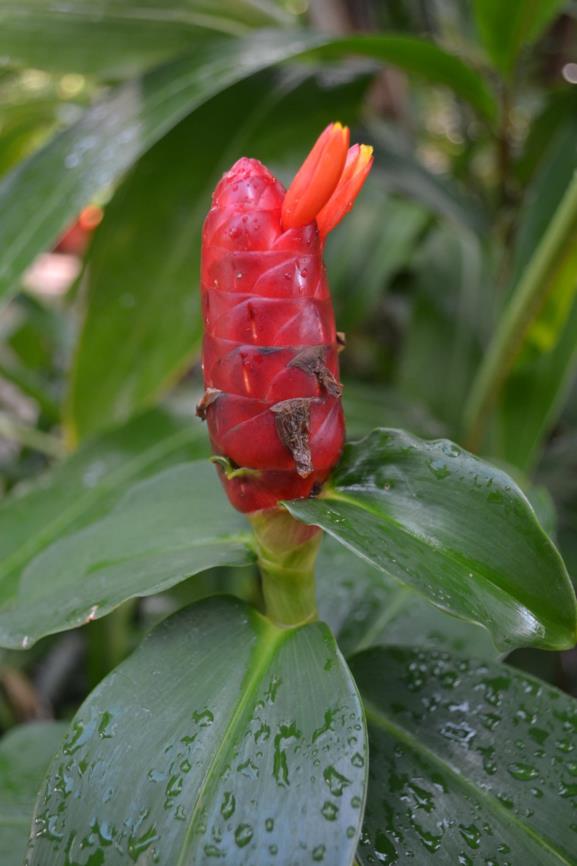

In comparison, the ethyl acetate, n-butanol and water extracts showed low antibacterial activity. The highest antibacterial activity against tested bacteria was observed in n-hexane, chloroform and ethanol extracts. Different plant extracts have shown significant antibacterial activity (p = 0.001) against each bacterium. Results: The observed IC 50 value showed that distilled water extract exhibited the highest antioxidant activity (43.9), followed by ethanol extract (52.4), and the lowest activity was observed in n-butanol extract (91.2) and n-hexane (90.6). All solvents were removed by rotary evaporation before testing the dried extracts. The antimicrobial activity was checked against Streptococcus mutans, Enterococcus faecalis, Staphylococcus spp., and Lactobacillus spp. DPPH and disc diffusion assays were used for antioxidant and antimicrobial activities. HPLC analysis was performed for the quantitative analysis. Methods: The current study evaluates ginger's biochemical profile using qualitative and quantitative analysis and its bioactive potentials using antioxidant and antimicrobial assays against Streptococcus mutans and selective oral microbes. Antibacterial activity, antioxidant properties and many bioactive compounds in ginger have been identified previously, which could be used as an alternative method to treat many infectious diseases. Introduction: Ginger (Zingiber officinale) has been one of the most commonly consumed herbal medicines for a long time to treat several common diseases. With a good recyclability of 4 cycles, green Mn3O4 nanoparticles can be used as potential adsorbent for removing malachite green dye from water. Green Mn3O4 nanoparticles offered a high stability through the FR-IR spectra analysis.
#Costus red button ginger free
Adsorption of malachite green over green Mn3O4 was a thermodynamically spontaneous process due to negative Gibbs free energy values (ΔGο < 0). Moreover, kinetic and isotherm adsorption of malachite green obeyed Langmuir (Radj.² = 0.980–0.995) and pseudo first-order models (Radj.² = 0.996–1.00), respectively. The maximum malachite green adsorption capacity for green Mn3O4 nanoparticles was 101–162 mg g⁻¹.

The effect of pH, contact time, dose, and concentration on the adsorption of malachite green over green Mn3O4 was carried out. Carbonyl groups derived from flavonoids or carboxylic compounds were found in the surface of green Mn3O4 nanoparticles. The X-ray diffraction and N2 isotherm plots confirmed the presence of tetragonal γ-Mn3O4 phase and mesoporous structure, respectively. The materials were characterized using several physicochemical techniques such as Fourier-transform infrared spectroscopy, X-ray diffraction, Energy-dispersive X-ray spectroscopy, scanning electron microscopy, Raman spectroscopy, and N2 adsorption desorption isotherm measurement. Herein, we developed green Mn3O4 nanoparticles synthesized using natural compounds extracted from Costus woodsonii flowers under an ultrasound-assisted mode.

The pollution of organic dyes such as malachite green is one of the globally critical issues, calling for efficient mitigation methods. woodsonii plant and result indicated high polarity solvent (methanol and water) recovered higher bioactive compounds. In short, sequential extraction provides understanding of polarity specificity of C. Overall, methanolic extracts showed the significantly (p ≤ 0.05) highest ascorbic acid content (75.76☑.47 mg/100mL), total phenolic content (249.64☒.83 mg GAE/100g), DPPH free radical scavenging activity (78.76☐.97 %), ferric reducing antioxidant power (22.55☐.96 mg TEAC/g), superoxide anion scavenging activity (46.60☑.57 %) and hydroxyl radical scavenging activity (50.35☐.96 %). Phytochemical screening showed positive presence of flavonoids (all types of extracts), terpenoids (only in methanolic extract) and tannins (except aqueous extract). woodsonii bract, at increasing polarities. Solvents of different polarities (hexane, ethyl acetate, methanol and water) were used to sequentially extract the C. The current study reports the composition, phytochemical and antioxidant properties of red button ginger (Costus woodsonii) using sequential extraction.

Costus plant is considered as a medicinal plant especially in therapeutic intervention.


 0 kommentar(er)
0 kommentar(er)
